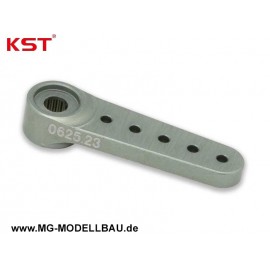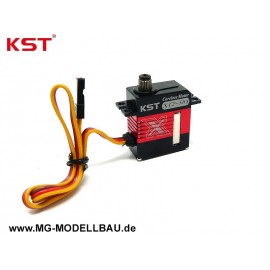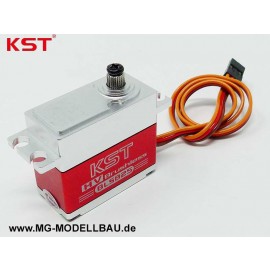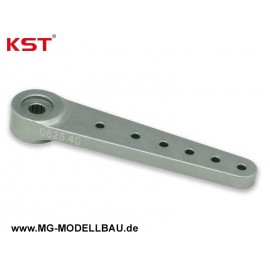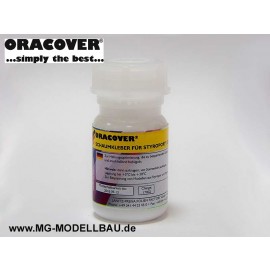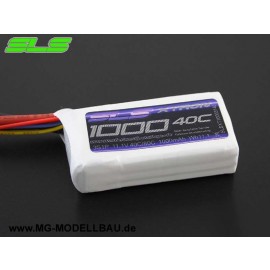DPS Splitter 10 S.BUS
Item no.: 01008007
EAN: 0805627060280
The DPS Splitter 10 S.BUS is designed for the high current supply of Futaba S.Bus receivers and S.Bus servos. The servos are usually connected to the responsible sockets (contact is pin) in the receiver. These supply the servos with power and with the position and control signal. A single connector input on the receiver is then responsible for the connection of the battery, or switch cable. If several servos are to operate simultaneously with a lot of power and/or high speed, this generally poses a problem for the power supply of the servos, because power and speed always go hand in hand with high current requirements.
This current demand cannot be sufficiently provided for the battery via the single plug-in connection on the receiver, so a "bottleneck" for the necessary servo current is created. In case of need, the voltage collapses, the servos become less powerful or slower or both. In the worst case, they even stop and the receiver fails. Depending on the current requirement.
Principle of battery backer
Battery backers are used to provide redundant power supply to a system by using a second battery. This results in "battery redundancy". Two accumulators are used, so that in case of failure of one accumulator the other one maintains the power supply of a system. In principle, this would be easy to solve by simply connecting a second battery in parallel to the system. Unfortunately, "Ohm's law" gets in the way: current always flows from a higher voltage to a lower voltage... So from the battery with the higher voltage to the one with the lower voltage - always. Never will two batteries have the same voltage or load capacity. So the current of the better battery does not flow to the system, but to the "worse or empty battery". This usually leads to the complete destruction of both batteries and to a crash of the model.
The ACT high current battery splitter system therefore solves the following problems:
- The servos with high current requirements are connected to the battery splitter, no longer to the receiver.
- One splitter has two high-current connections for two receiver batteries due to the built-in battery switch; their voltage is then fed (via the built-in battery switch) directly and loss-free to the servo sockets on the splitter.
- The position and control signal for the servos is routed separately from the receiver to the individual plug-in connectors. In order for the receiver to work, it receives its voltage from the splitter via a single patch cable. ( S.BUS signal, all parallel )
- The position signal is routed separately to the plug-in connections of the splitter. Either via the S.BUS when using Futaba receivers, or via patch signal cables when using receivers other than Futaba.
- The operating current for servos and receivers is thus "split".
Why high current for servos, what happens in case of undersupply?
- For the large, dynamic, very short fluctuations of the current demand (current peaks) of today's servos, an unhindered current supply to the servo is necessary, therefore not only high current batteries must be used, but also connectors and cables must be able to supply the high current to the servo sockets.
- One reason why any voltage regulation works rather insufficiently, it is always "slower" than the fast (dynamically) fluctuating current demand of the servos, and slower than a high current battery, which can deliver these current peaks by all means.
- But modern servos need just these current peaks to be able to deliver their actual power. Therefore there is nothing better for powering such servos than to lead the battery voltage to the servos in the most direct way, without any voltage regulation or other resistances like unsuitable connectors or long or thin cables.
- The best way to adapt to different servo voltages is to use appropriately matching battery types. LiFe batteries for all servos, or LiPo batteries for LiPo(HV) servos. Thus a voltage regulation is not necessary.
Please refer to our articles SERVO-TUNING and SERVOSTECKER & CONTACTS in FUTAPEDIA on the subject of power supply.
Technical data
- Splitter: 10 S.BUS
- Servo outputs: 10
- S.BUS outputs/inputs: 2
- Battery connection: 2x XT60
- Continuous current max: 60A
- Voltage range: 5-8,4V
- Input voltage = Output voltage
- Dimensions: 68x47x17mm
- Weight: 59g
Features:
- DPS splitter for high current supply of receiver and servos.
- 10 servo outputs
- 2 S.BUS outputs/inputs
- 2x battery connector XT60
Scope of delivery:
- 1 pc. DPS Splitter 10 S.BUS (delivery without receiver!)
Customers who bought this product also bought:
Already seen?
EUR 4,95
incl. 19% MwSt
EUR 15,50
incl. 19% MwSt


